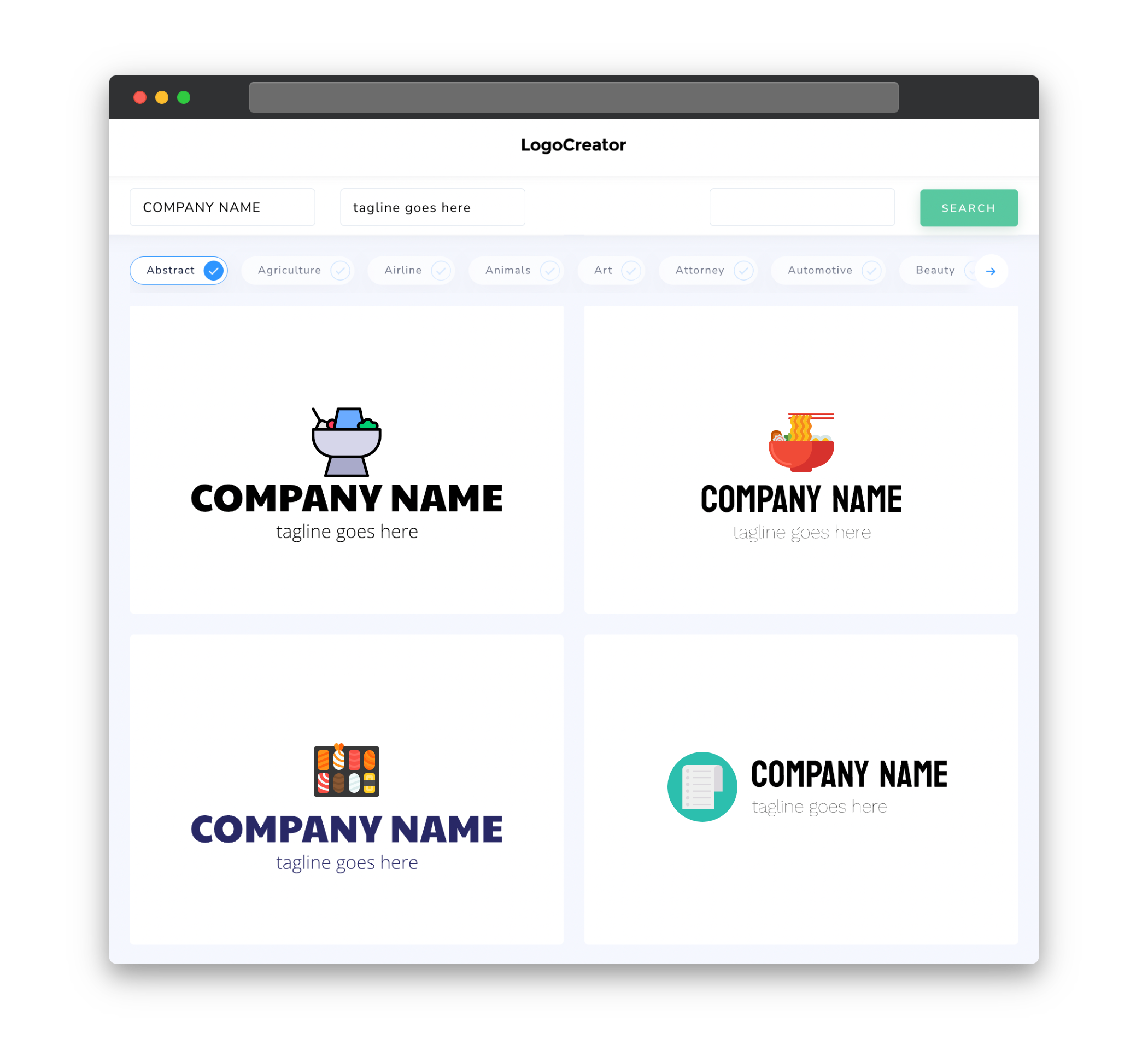Audience
Creating a captivating and unique logo for your Japanese food business is essential to catching the attention of your target audience. From sushi restaurants to ramen shops, your logo should resonate with those who appreciate the artistry, tradition, and deliciousness of Japanese cuisine. By using a combination of visually appealing elements such as iconic Japanese food symbols, vibrant colors, and elegant fonts, you can effectively communicate the essence of your brand to your audience. Whether you are running a small local eatery or a high-end Japanese fusion restaurant, a well-designed logo will help you establish a strong and memorable brand identity.
Icons
When designing a logo for a Japanese food business, incorporating relevant icons is crucial. Icons such as sushi rolls, chopsticks, origami cranes, or traditional Japanese buildings like pagodas can instantly convey the theme of Japanese cuisine. These icons not only serve as recognizable symbols but also evoke a sense of authenticity and cultural connection. By carefully selecting and incorporating these iconic elements into your logo design, you can create an immediate visual association with Japan and its rich culinary heritage.
Color
Color plays a significant role in creating a visually appealing and memorable logo for your Japanese food business. When selecting colors for your logo, consider using a combination that evokes the essence of Japanese culture and cuisine. Traditional colors such as deep red (representing passion and strength), black (representing elegance and sophistication), and gold (representing wealth and prosperity) are often associated with Japanese art and aesthetics. Additionally, incorporating shades of green (representing nature) or blue (representing tranquility) can evoke a sense of freshness and harmony, commonly found in Japanese dishes. The right color palette will not only attract attention but also communicate the values and qualities that your brand represents.
Fonts
Choosing the right fonts for your Japanese food logo is important in conveying the desired message and creating a harmonious visual identity. Look for fonts that exhibit elegance, simplicity, and clarity, while still capturing the essence of Japan. Depending on the style you want to convey, you can opt for traditional Japanese calligraphy-inspired fonts or modern and clean sans-serif fonts. Traditional calligraphy fonts can add a sense of authenticity and cultural heritage to your logo, while sans-serif fonts can give it a contemporary and approachable feel. Whichever font style you choose, ensure that it is legible and complements the overall aesthetics of your logo design.
Layout
The layout of your Japanese food logo should be carefully considered to ensure that it effectively communicates the essence of your brand. Whether you choose a combination of icons and text or a more minimalist design, the layout should be balanced and visually pleasing. Incorporating negative space can help create a sense of clarity and elegance, allowing your logo to stand out. Experimenting with different layouts, sizes, and arrangements of elements can help you find the perfect balance between simplicity and visual impact. Remember that a well-designed logo layout will not only catch the eye of your audience but also convey the professionalism and quality of your Japanese food business.
Usage
Once you have created a captivating logo for your Japanese food business, it’s important to consider its usage across various platforms and promotional materials. Your logo should be scalable and adaptable to different sizes and formats, from large signage to small business cards. Make sure you have versions of your logo that work in both horizontal and vertical orientations, as well as in color and black-and-white formats. Additionally, consider how your logo will look on different backgrounds, ensuring that it remains legible and visually appealing. By creating a versatile logo that is easily recognizable and adaptable, you can maintain a consistent brand presence across all your marketing materials and platforms.



